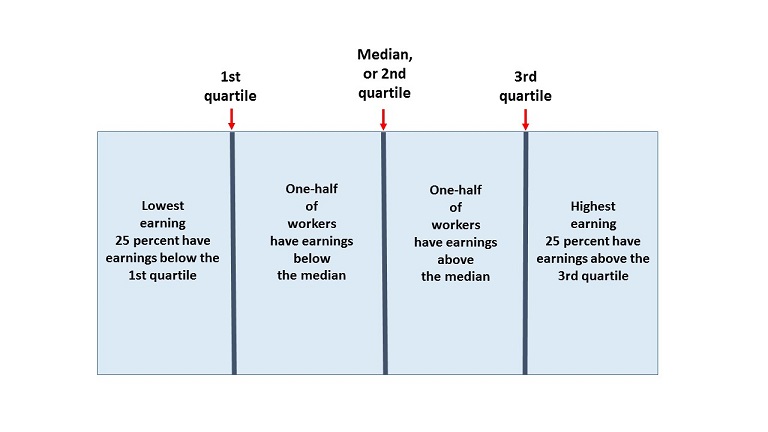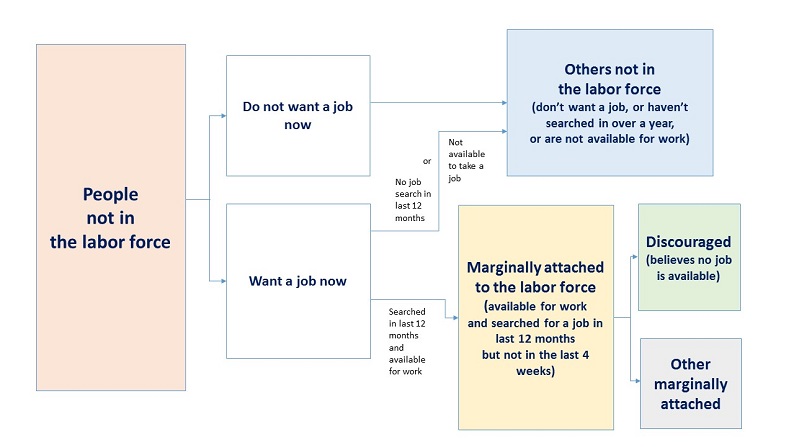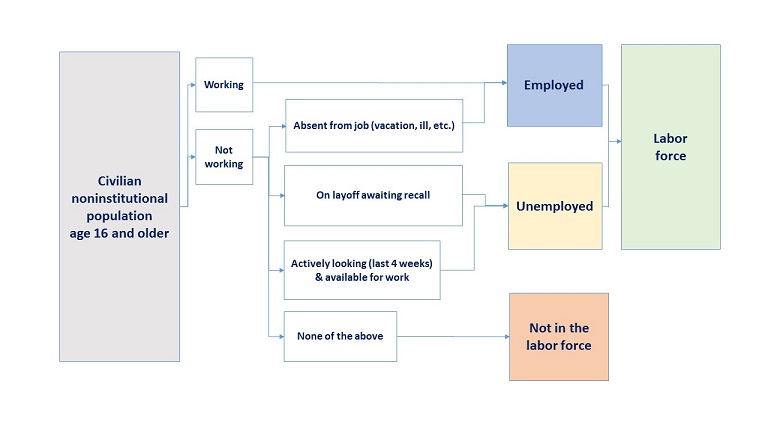The Employment To Population Ratio Measures
In June 2010 the employment was 1391 million and the working-age population was 2377 million. The employment-population ratio measures the ratio of adults 16 years of age and older who are employed.
 Value Mapping 19 Slide Powerpoint Flevypro Document In 2021 Performance Measurement Map Algorithm
Value Mapping 19 Slide Powerpoint Flevypro Document In 2021 Performance Measurement Map Algorithm
The employment population ratio provides the best summary of the state of the job market rather than the unemployment rate bc it measures the fraction of the population that.

The employment to population ratio measures. The share of adults with jobs is known formally as the employment-population ratio. The employment-population ratio measures the 0 A percentage of the working age population that is in the labor force O B. Employment and Unemployment The Employment-to-Population Ratio The employment-to-population ratio is the percentage of the working-age population who have jobs.
The employment-to-population ratio is a measure of the number of people employed against the total working-age population. Percentage of the working age population that is employed. They are calculated as the ratio of the employed to the working age population.
It simply shows the number of people currently employed as a share of the total working-age population which is the number of civilian non-institutionalized persons age 16 and over. Theres also the employment-population ratio which measures employed people as a percentage of the 16-and-over civilian non-institutional population. The EPOP which stood at 611 percent on the eve.
Cpercentage of the working age population that is employed. Bpercentage of the working age population that is not employed. Employment rates are sensitive to the economic cycle but in the longer term they are significantly affected by governments higher education and income.
This measure is the number of employed as a percentage of the civilian. One of the most telling measures of a states economy is the employment-to-population ratio for those in their prime-working years. In other words it is the percentage of the population that is either working or actively seeking work.
The employment-population ratio is less prone to vagaries caused by seasonal workers or by. Seasonal variations and short-term labor fluctuations do not affect the. Currently the employment-pop- ulation ratio measures civilian employment as a percent of the total noninstitutional population including mem- bers of the Armed Forces age 16 and over while the most commonly used participation rate measures the ci- vilian labor force as a percent of the civilian non- institutional population 16 and over.
1 Simply put it is the portion of the adult population 16 years and older that is employed. The Employment-to-Population Ratio is a useful broad-brush measure. Employment-to-Population Ratio The Employment-to-Population Ratio is a useful broad-brush measure.
The Bureau of Labor Statistics BLS defines the employment-population ratio as the ratio of total civilian employment to the civilian noninstitutional population. Portion of the total population that is employed. The employment-population ratio measures the Apercentage of the working age population that is in the labor force.
This measure is the number of people in the labor force as a percentage of the civilian noninstitutional population 16 years old and over. It simply shows the number of people currently employed as a share of the total working-age population which is the number of civilian non-institutionalized persons age 16 and over. Dportion of the total population that is employed.
Percentage of the working age population that is not employed. Employment rates are defined as a measure of the extent to which available labour resources people available to work are being used. The employment-to-population ratio was adopted as one of four indicators to measure progress towards target 1b on achieving full and productive employment and decent work for.
The employment-to-population ratio is Employment Working-age population 100. A simpler measure is the employment-to-population-ratio EPOP a ratio of the number of people employed to the number of people in the population. Though the ratio has some quirks its less affected by seasonal variations or short-term fluctuations in labor-market behavior than the unemployment rate.
:max_bytes(150000):strip_icc()/employment-986db6a697e14d789028b95e23d0aea2.jpg) Employment To Population Ratio Definition
Employment To Population Ratio Definition

 Making The Right Investments The Team Framework And Measures You Need To Evaluate Population Heal Population Health Management Healthcare Business Investing
Making The Right Investments The Team Framework And Measures You Need To Evaluate Population Heal Population Health Management Healthcare Business Investing
 Labor Force Participation Rate Formula Participation Rate Forced Labor Participation
Labor Force Participation Rate Formula Participation Rate Forced Labor Participation
 Turaskills Shares The Six Steps In Conducting A Casecontrol Study Clinicalstudydesigns Casecontrolstudy Visit Our W Case Control Study Skills Case
Turaskills Shares The Six Steps In Conducting A Casecontrol Study Clinicalstudydesigns Casecontrolstudy Visit Our W Case Control Study Skills Case
:max_bytes(150000):strip_icc()/unemployment-5bfc344bc9e77c00519c4b43.jpg) Employment To Population Ratio Definition
Employment To Population Ratio Definition
 Roi Metrics Are Direct Easy To Interpret Profitability Measures Investing Business Management Metric
Roi Metrics Are Direct Easy To Interpret Profitability Measures Investing Business Management Metric
:max_bytes(150000):strip_icc()/GettyImages-172752359-82d9bd91a55f492e9bb9cd35c5e71358.jpg) Employment To Population Ratio Definition
Employment To Population Ratio Definition
 Chart Shows Population Shares Of Non Employed Groups Economic Research Chart Long Term Unemployed
Chart Shows Population Shares Of Non Employed Groups Economic Research Chart Long Term Unemployed
 Employment To Population Ratio Overview Formula Global Data
Employment To Population Ratio Overview Formula Global Data
:max_bytes(150000):strip_icc()/profile-EricEstevez-4439ff1611f74bbfbabfc9fa32af2072.jpg) Employment To Population Ratio Definition
Employment To Population Ratio Definition
 Origins Of Job Market Troubles Hard To Pinpoint Marketing Jobs Marketing Job
Origins Of Job Market Troubles Hard To Pinpoint Marketing Jobs Marketing Job
 Toil And Trouble Data Visualization Design Toil And Trouble Chart
Toil And Trouble Data Visualization Design Toil And Trouble Chart
:max_bytes(150000):strip_icc()/thinkstockphotos_493208894-5bfc2b9746e0fb0051bde2b8.jpg) Employment To Population Ratio Definition
Employment To Population Ratio Definition
/GettyImages-1025082012-5ba64f7f4911481bb11a2e2137be6c37.jpg) Employment To Population Ratio Definition
Employment To Population Ratio Definition
 World Indicators Of Skills For Employment Wise New Oecd Database Skills Wise Employment
World Indicators Of Skills For Employment Wise New Oecd Database Skills Wise Employment



Post a Comment for "The Employment To Population Ratio Measures"